I’m about two months into my Front End Web Development course, and it’s about time I update.
As of this writing, I’ve completed four out of nine of the certificate program’s courses. Since my last post, I’ve finished “Programming with Javascript,” “Version Control,” and “HTML and CSS in Depth.” I’m currently in the middle of “React Basics.”
Programming with Javascript
So far, this is one of my favorite courses in the program. This is mainly because it’s the only language I never really understood the basics of. It covers the basics from logging into the console to editing and integrating with HTML, how to use event handlers, and editing basic HTML with the console in inspect element.
One of the more significant concepts introduced was OOP or Object-Oriented Programming. OOP is a recommended programming model for developing applications, where some parts of a website are thought of as modules that can be removed, duplicated, and quickly edited for reusability.
For example, instead of writing new code every time you want to show the latest blog post, you can create a reusable template that knows how to do this. Then, whenever you need it, you can use that template to automatically grab and display the newest blog post on any page without having to write the code again. A big part of that is being demonstrated in my current course I’m taking on React Basics.
There’s a much better explanation of how it works and more in-depth here.
Version Control
Version control covers the basics of GitHub. As with Javascript, this course was also informative. I’ve used GitHub occasionally for small projects and downloaded many open-source apps, but I never really understood how to use it and how it works. This course covered creating repositories, forking, branching, and basic terminal commands.
One of the neat things I learned about GitHub that I previously did not know about is the branching system for repositories. In a barebones repository, you have the Main branch, which has the (usually) fully fleshed-out main releases for a project. For example, I’m developing docs for the Drone Project (https://ezraharris.com/category/tech/drone/ series I’m doing on building drones for a drone show). With that, I chose a free template for creating docs called “Read-the-Docs.” Read the Docs has a template with GitHub, which makes it super easy to create a copy from the template page and host it for free using their deployment system. The branching is part of the automatic deployment system; I have two branches in GitHub: a Testing branch and a Main branch. I can make changes to the testing branch that may break the formatting, but that’s not on the main page and won’t affect the primary traffic of users. I can preview edits before pushing the testing branch into the main branch.
GitHub has much better documentation on using branching and managing pull requests here.
HTML and CSS in Depth
This also introduced many new concepts I had no idea were natively possible, like animations, using keyframes for more than just linear animations, and creating super smooth effects with only a couple of lines of code.
At the end of this course, I had to create a basic homepage using the concepts covered in the course. I was given a choice of four clients. I ended up choosing Lucky Shrub. I was provided a basic description with info about the client, logos, and a couple of preparation videos outlining the site’s basic framework I would create.
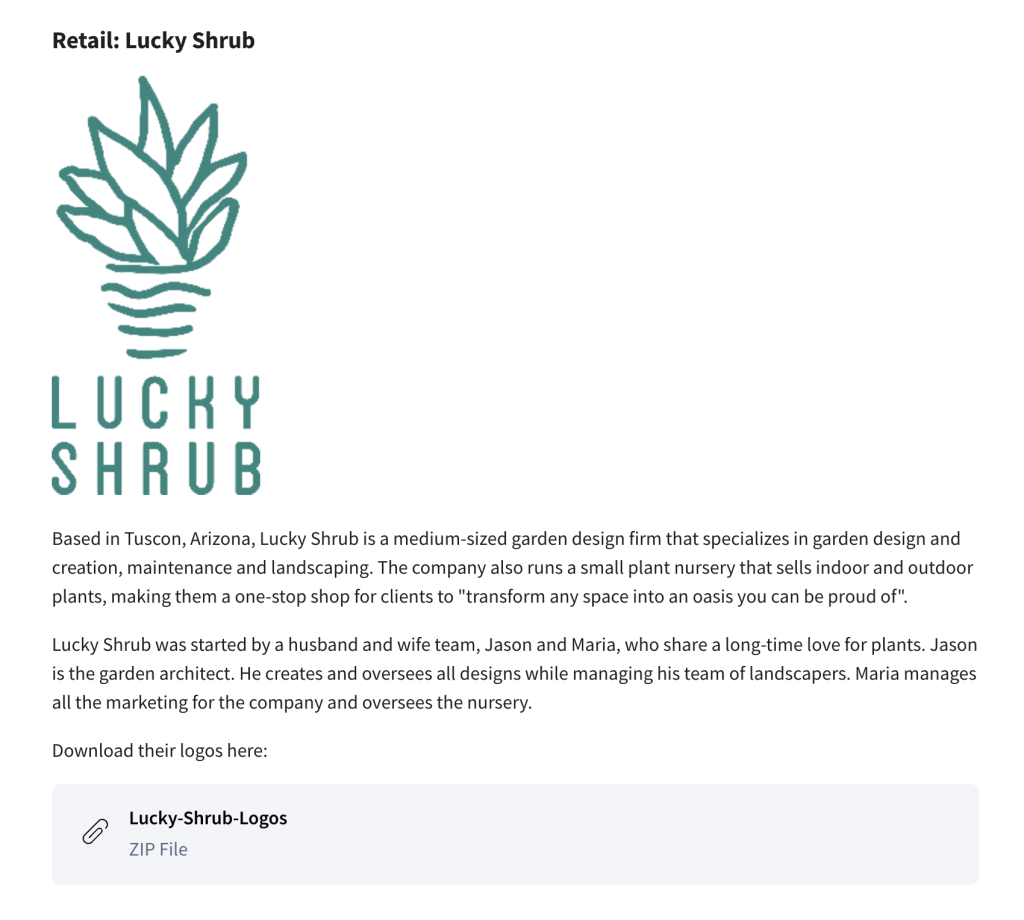
What made this assignment different from the other courses was the peer-reviewed grading. This is where I had some issues with Coursera. The downside is that they only support uploading HTML and CSS files, for the final project, making it challenging to review my peers’ websites because the links between files and folder structures were strange or because they used images outside of what Coursera provided. In the end, it made for a more complicated grading system than what it needed to be.
I ended up uploading the whole site to a GitHub repository and hosted it on Pages.dev. Cloudflare provides free basic web hosting and testing applications. (You can view my finished site for the project here)
I think it’d be a much easier process if Coursera worked with Pages.dev and/or Github to host the sites for previews instead of the mangled way of downloading and hosting it locally they have now.

Overall, I enjoyed all of the courses, but Javascript and React are quickly becoming the most interesting.

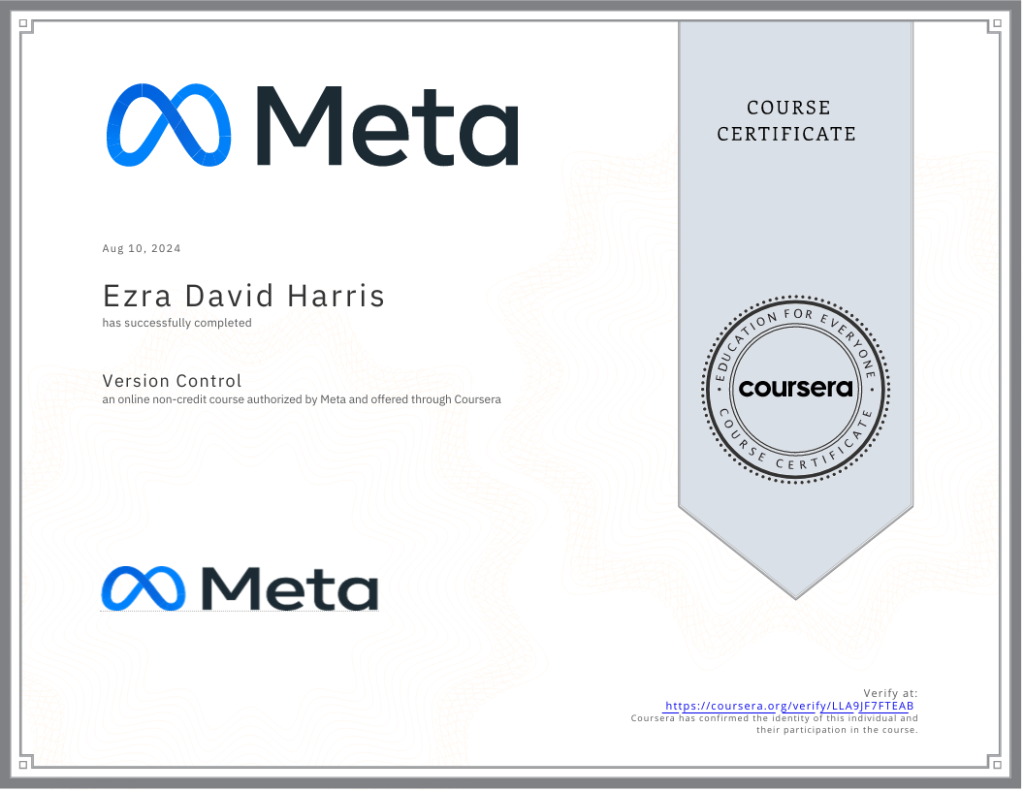
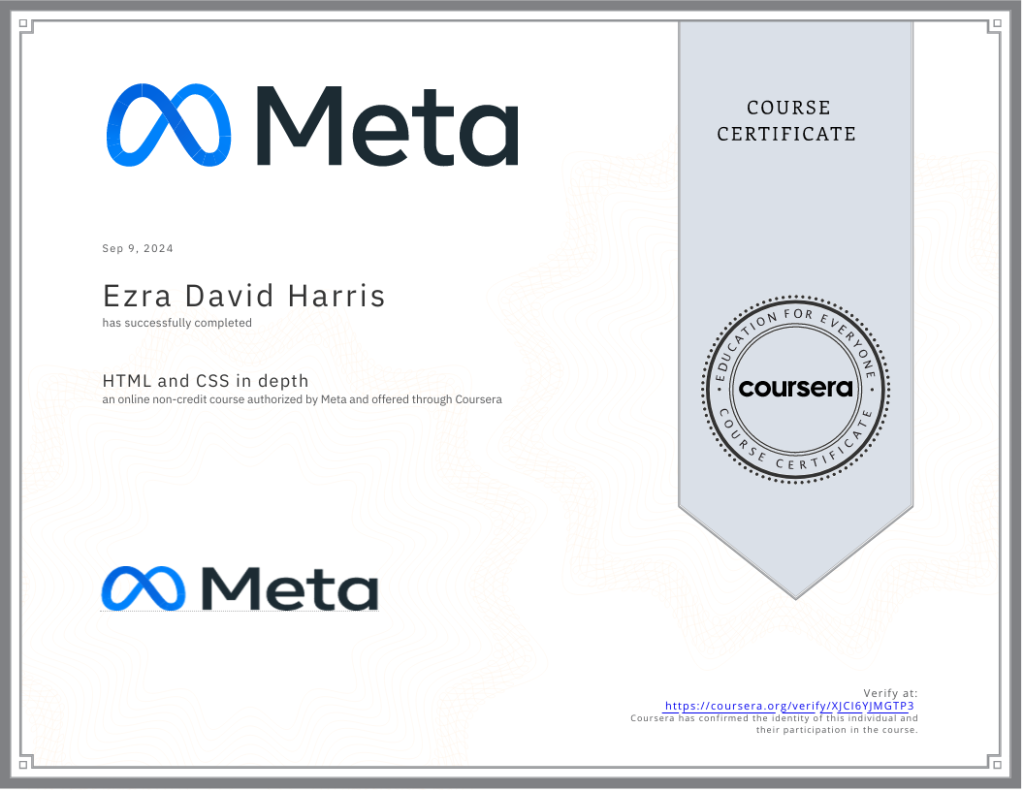
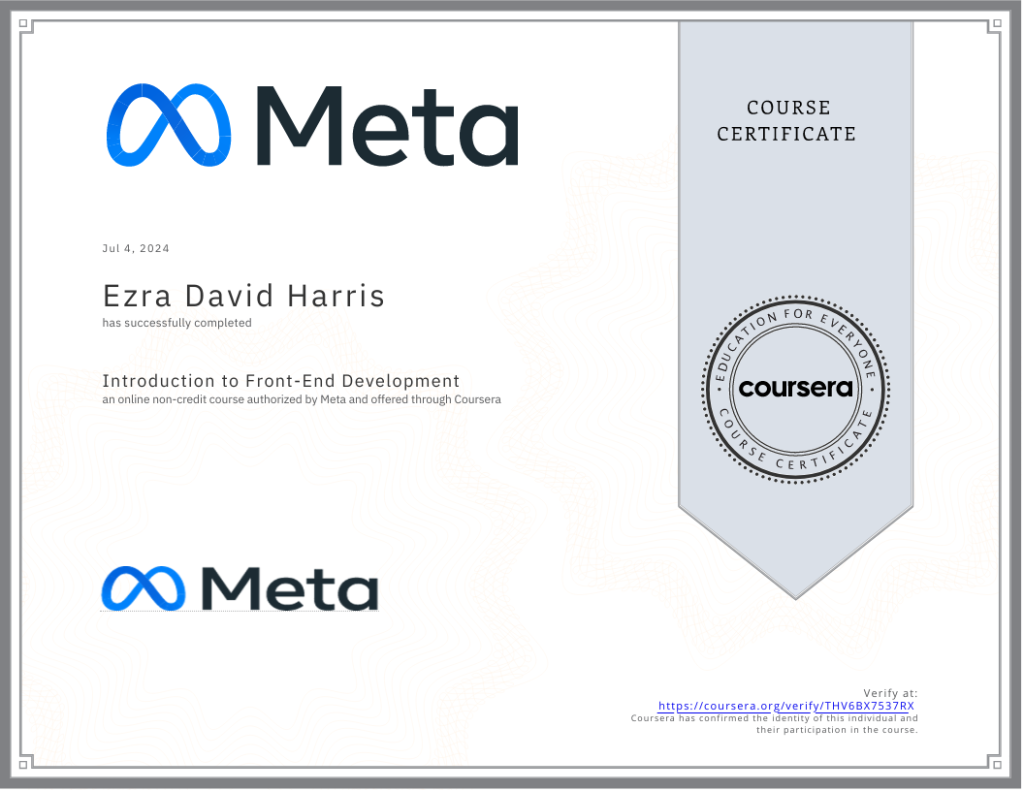
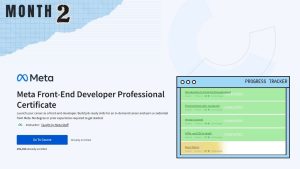
Leave a Reply